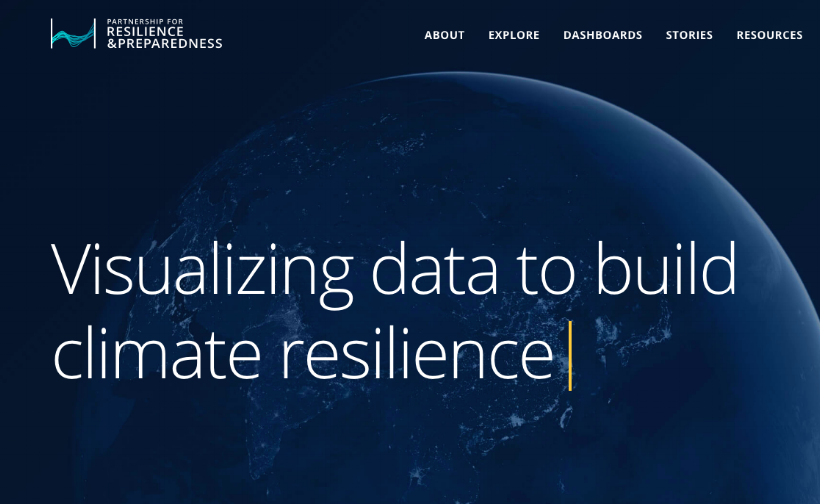Partnership for Resilience and Preparedness
Major challenges in managing and analyzing climate data include the size, scope, variety, and complexity of the data involved. The Partnership for Resilience and Preparedness (PREP) was launched in 2016 to make climate data more accessible and usable. According to its website, the Partnership was formed “around a simple principle—we believe that climate and socioeconomic data should be accessible and usable for everyone.” PREP was created through a public-private partnership involving the World Resources Institute, the Office of Science and Technology Policy, and the United States Global Change Research Program (USGCRP).
The PREP website now lists three federal agencies as partners on PREP – the U.S. Department of the Interior (DOI), the National Aeronautics and Space Administration (NASA), and the National Oceanic and Atmospheric Administration (NOAA) – along with a wide variety of private sector partners. These range from industry giants like Amazon Web Service, Google, Microsoft, and The Weather Company to research institutions and businesses with expertise in geospatial data, climate science, data analytics, visualization, and other areas.
Key datasets for PREP are now housed on the PREPdata site, which describes itself this way: “PREPdata, an open-source data platform, provides access to the curated data that decision-makers need to analyze vulnerability and build climate resilience. It allows users to easily find highly credible climate, physical and socioeconomic datasets from sources like NASA, NOAA, USGS, ESA and more; map them to visualize a specific region’s vulnerability; track the indicators most relevant to their work on customizable dashboards; and share their stories with adaptation professionals around the world. The platform’s wide-ranging datasets include temperature, precipitation, drought and flood risk, social vulnerability, coastal energy facilities, landslides, sea level rise, global urban heat island effect, reservoirs and dams, global cropland extent and more.”

